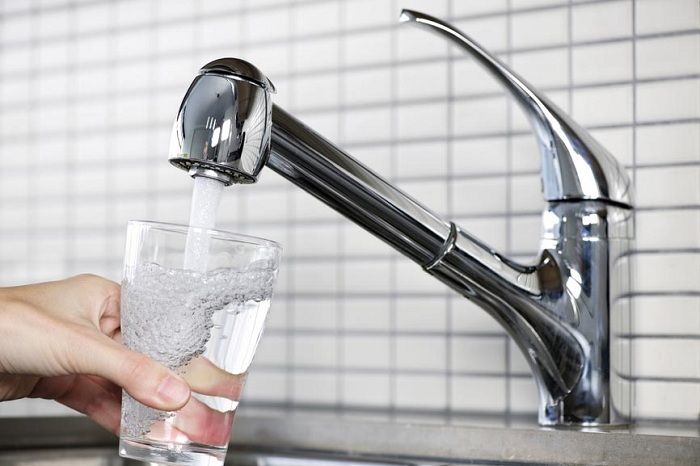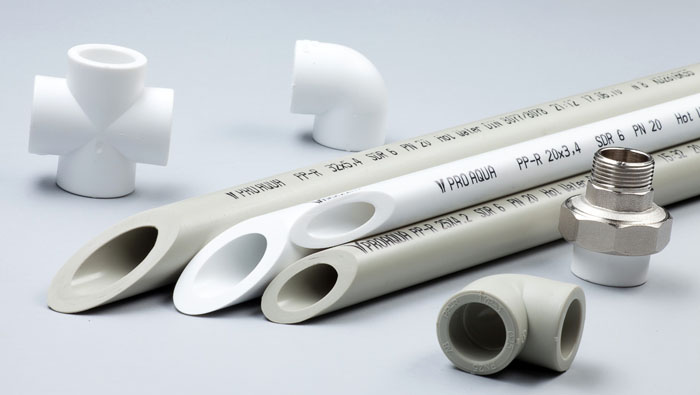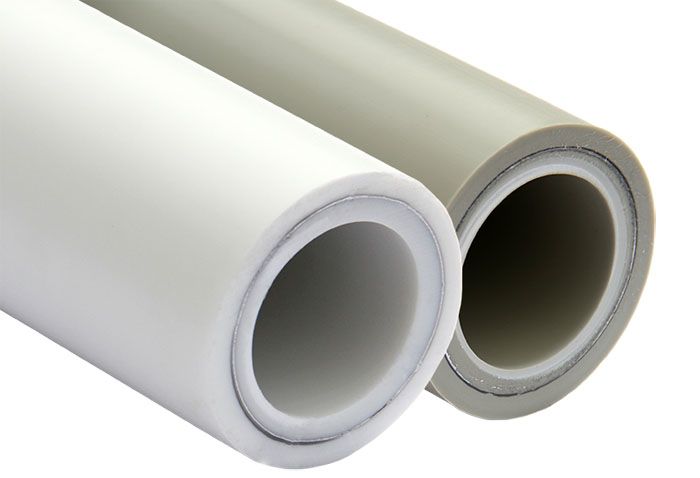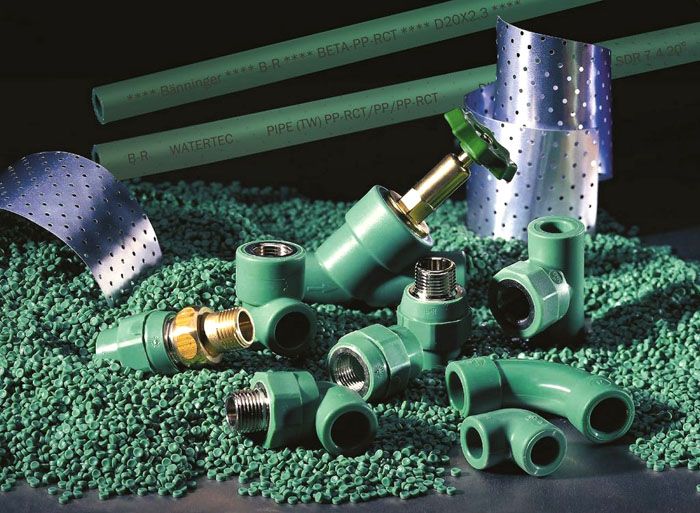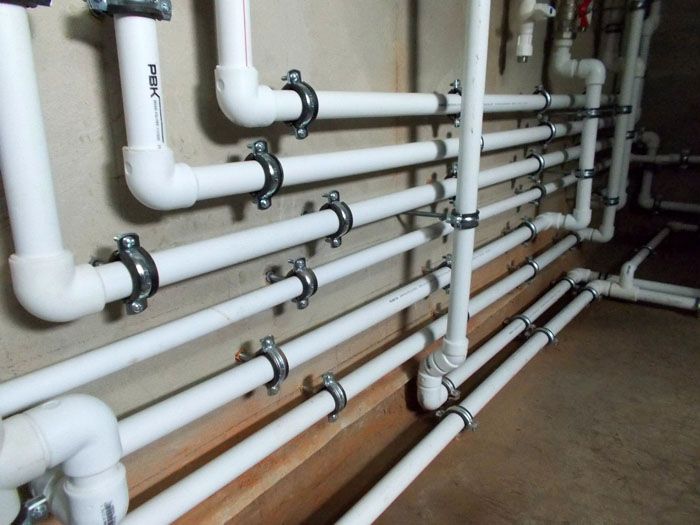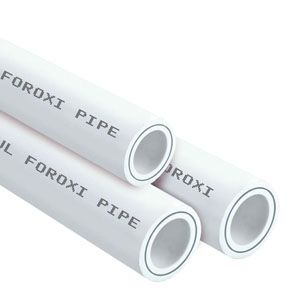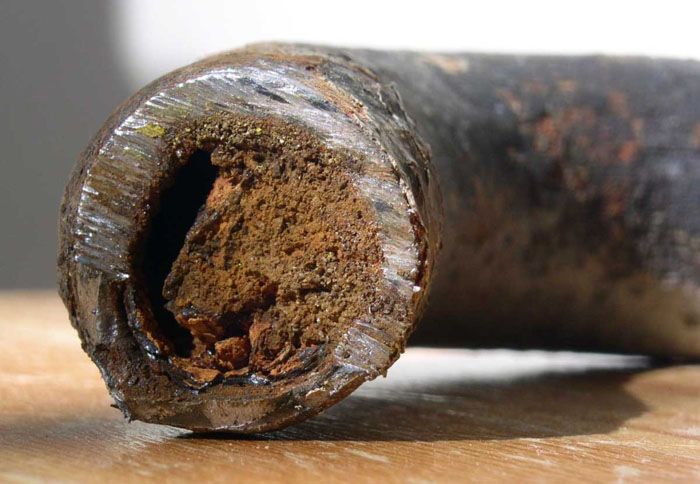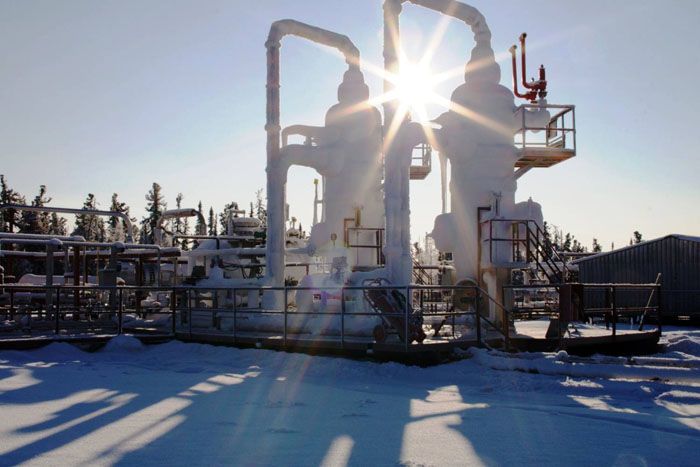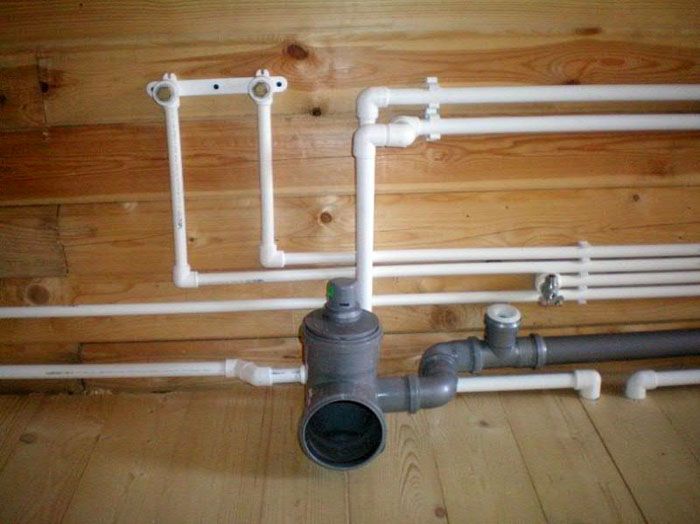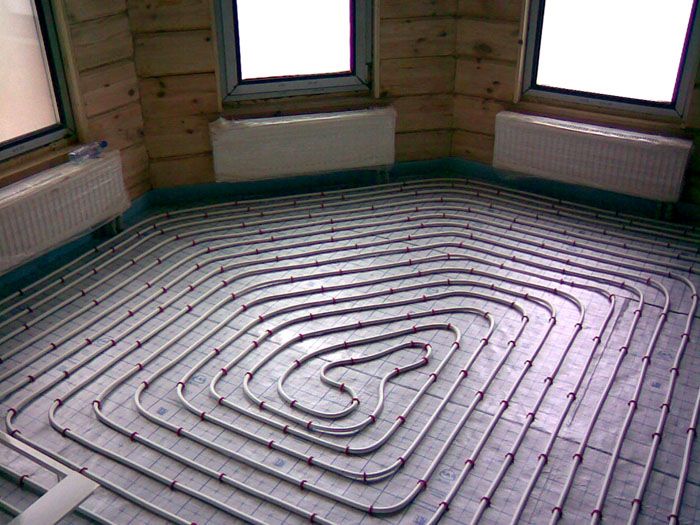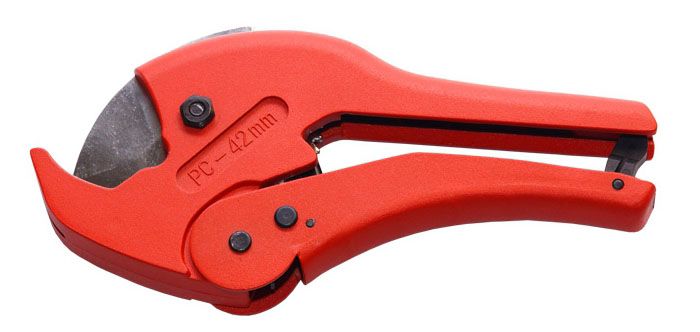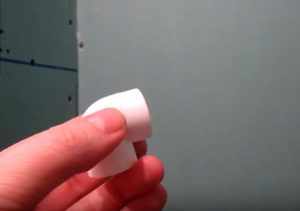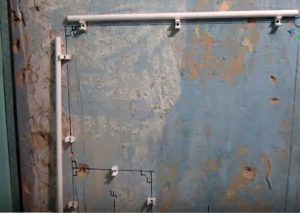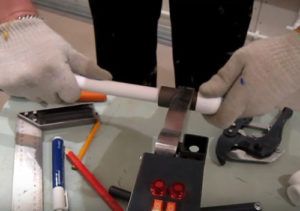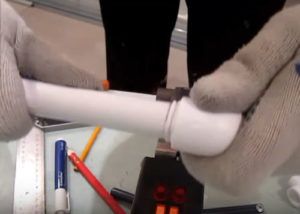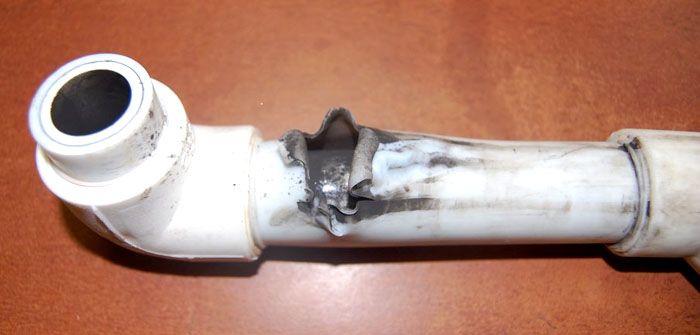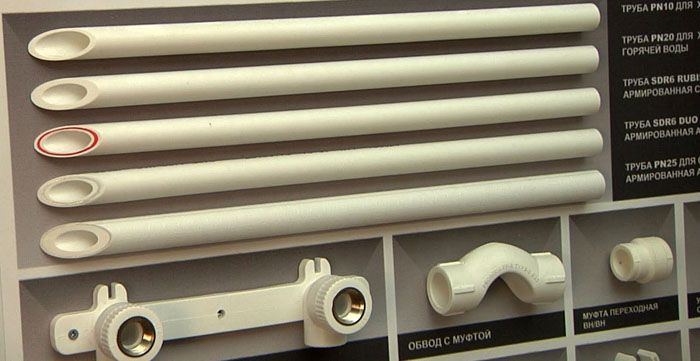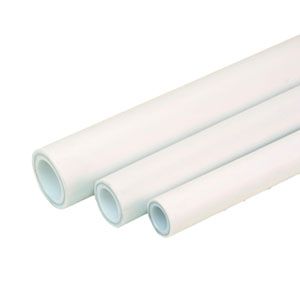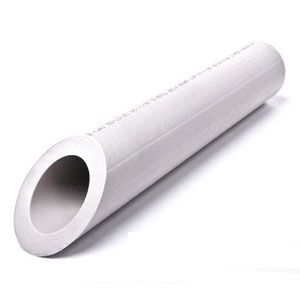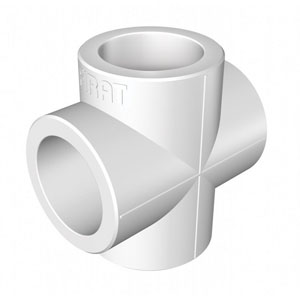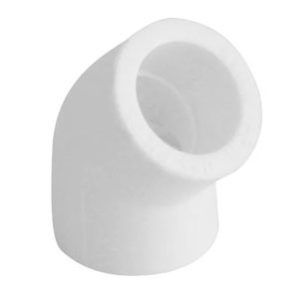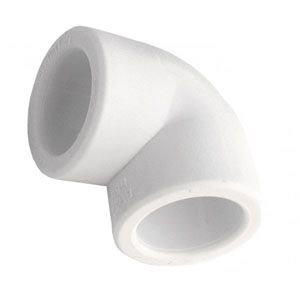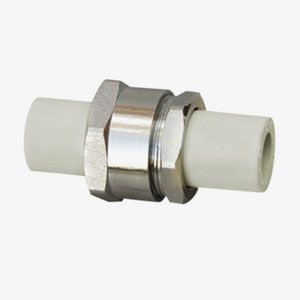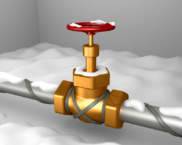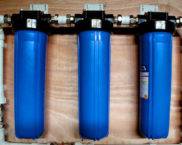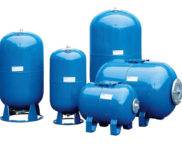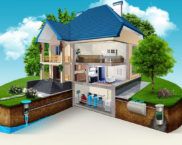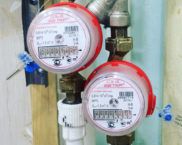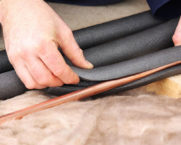Polypropylene pipes for cold and hot water supply: how to correctly connect and choose
Metal pipelines for water are gradually being forced out of the market. They are being replaced by polypropylene pipes for cold and hot water supply, the service life of which is much longer, as the manufacturers themselves assure. The editors of homemaster.techinfolux.com/en/ have dealt with the issue of choosing products for water supply in detail and determined by what parameters it is most correct to choose them and how to professionally connect them.
The content of the article
- 1 Polypropylene pipes for cold and hot water supply: scope
- 2 Advantages and disadvantages of polypropylene pipes
- 3 Types of polypropylene pipes
- 4 Main technical characteristics of polypropylene water pipes
- 5 Technical requirements for polypropylene pipes for water supply in accordance with GOST
- 6 Marking of polypropylene pipes for water supply
- 7 Table of standard sizes of polypropylene pipes
- 8 How to choose the diameter of polypropylene pipes for water supply
- 9 Which polypropylene pipes are best for plumbing
- 10 Features of the use of polypropylene pipes in the heating system
- 11 Installation and wiring of polypropylene pipes: what are the nuances
- 12 What determines the service life of polypropylene pipes for water supply
- 13 Main manufacturers of polypropylene products for water supply
- 14 Average prices for polypropylene products
Polypropylene pipes for cold and hot water supply: scope
Today polypropylene pipes are very common in various fields:
- in industry;
- during gasification;
- when pumping oil;
- in the agro-industrial complex;
- in the sewage system;
- for underfloor heating systems;
- for water pipes.
The opinion that any polypropylene pipe is suitable for water supply is wrong. Manufacturers produce several types of products, each of which has its own role. Polypropylene products are designated by the letters "PP".
When construction of new water pipelines you can immediately give preference to this product, and not choose between polypropylene and metal.Also, the products are widely used when it is necessary to replace an outdated water supply system. The most common application for intra-house and intra-apartment networks.
Advantages and disadvantages of polypropylene pipes
It should be noted that this type of product has many advantages. That is why she gained popularity so quickly. The main advantages:
- resistance to corrosion;
- resistance to acids and biologically active substances;
- lack of reaction allows to obtain at the outlet pure water without impurities, iron content, retaining its color and taste;
- the water pressure is stable, since the hydraulic resistance inside the product is small;
- installation is very simple, in addition, you can easily create a system of any complexity;
- the material is not afraid of high and low temperatures;
- low cost;
- a reduced level of thermal conductivity avoids heat loss.
Speaking about the material, one cannot fail to note its shortcomings. These include:
- the need to carefully select products for a specific pipeline, otherwise the material will become unusable very quickly, and ruptures are not excluded;
- presence on the market of a large number of cheap low-quality products;
- the need to have a special device for processing joints and be able to work with it.
There are practically no disadvantages of this type of product. Serious ones are not connected with the pipes themselves, but with defects in their production.
Types of polypropylene pipes
When laying the pipeline it is important to understand that for hot water it is necessary to choose one type of product, and for cold water - another. The selection of products of the same type is a common mistake that often causes a system breakdown.
There are products:
- by material of manufacture;
- by type of reinforcement.
In order to choose the right material, let's get acquainted with the nuances of its production.
By material of manufacture
When purchasing pipes for your own needs, you will definitely pay attention to the marking. These signs and letters speak volumes. First of all - about the material of manufacture. There are several types of products:
- Random copolymer, marked as PP-R. Made of polypropylene copolymer and designed for hot water supply.
- Homopolypropylene, marked as PP-H. Withstand high working pressure, therefore they are widely used in industry. Suitable for cold water supply.
- Block copolymer, PP-B marking. They are used for underfloor heating systems and cold water pipes.
Important! If the pipeline is external, it is better to pay attention to the presence of a UV-resistant shell, which will allow the pipes to serve an order of magnitude longer.
The table below shows the safety factor for products of different types:
| Material | Water temperature, ° C | ||
|---|---|---|---|
| 10−40 | 40−60 | Over 60 | |
| PP-H | 1,6 | 1,4 | 1,25 |
| PP-R and PP-B | 1,25 | ||
As you can see, PP-H pipes are highly dependent on the water heating temperature.
Related article:
Plastic pipes for water supply. In the publication, we will consider the sizes and prices, types, advantages and disadvantages of plastic pipes, selection criteria, as well as the nuances of self-installation and the recommendations of specialists.
By type of reinforcement
Reinforcement is an indicator that affects the coefficient of thermal expansion, lowering it. It is done in one of several ways:
- with fiberglass (marked with the letters FB);
- with aluminum foil when placed closer to the inner edge of the pipe (marking AL);
- with aluminum foil when placing the layer closer to the outer edge (marking AL);
- using a composite (GF marking).
If the aluminum layer is closer to the top edge, you will need to clean the edges before use.The highest quality elements are considered to be reinforced with fiberglass or composite.
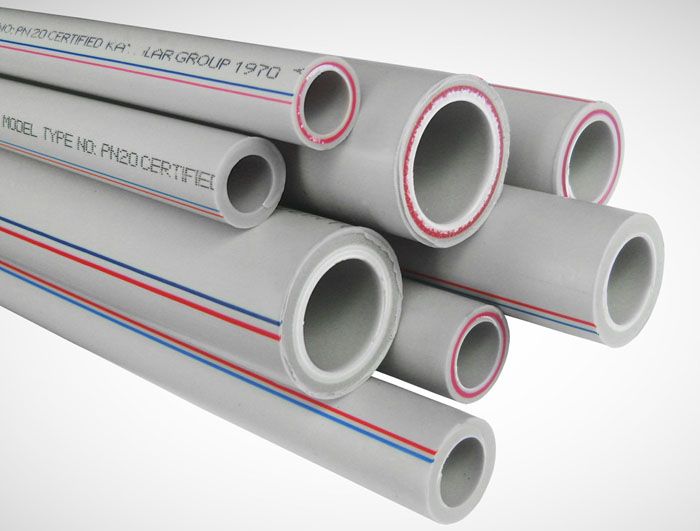
The cut shows the presence of reinforcement in the form of metal strips or multi-colored interlayers of fiberglass and composite
Main technical characteristics of polypropylene water pipes
Let's talk about the main characteristics of pipes, according to which the buyer makes a choice in the store:
- diameter of polypropylene pipes. Products with a diameter of 15 to 1200 mm are produced, which are designed to provide water to both a private and an apartment building;
- PN marking will allow you to choose a product for both cold and hot water, as well as for a certain water pressure (the table is shown below);
- inner diameter or wall thickness. The thicker the wall, the more water pressure it can withstand;
- length. This parameter does not have a qualitative meaning, however, let us clarify that all factory products are 6 meters long.
Technical requirements for polypropylene pipes for water supply in accordance with GOST

This quality standard is the only one to characterize the quality of both pipes and fittings and connectors. The general requirements for water supply polypropylene pipes are as follows:
- they must have a circular cross-section;
- must be pressure-bearing;
- used in residential and non-residential buildings, as well as in industries;
- serve both technical and drinking water.
Marking of polypropylene pipes for water supply
The marking of polymer pipes for water supply allows the buyer to quickly determine whether this product is suitable for him or not:
- PN-10 intended for cold water and underfloor heating (up to a temperature of + 45 ° C);
- PN-16 suitable for installation of "warm floor" or hot water, the brand is unpopular with craftsmen;
- PN-20 designed for hot water supply with a maximum temperature of up to + 80 ° C;
- PN-25 the most durable, they can withstand water temperatures of + 95 ° C.
Important! Hot water products must withstand high temperatures.
The table below includes the main characteristics of the pipes. The marking is present directly on the product.
Table of the main characteristics of pipes
| Marking | Allowable pressure, MPa | Outside diameter, mm | Wall thickness, mm | Permissible water temperature, ° C |
|---|---|---|---|---|
| PN-10 | 1 | 20-110 | 1,9-10 | 45 |
| PN-16 | 1,6 | 16-110 | 2,3-15,1 | 60 |
| PN-20 | 2 | 16-110 | 1,6-18,4 | 80 |
| PN-25 | 2,5 | 21,2-77,9 | 4-13,3 | 95 |
Table of standard sizes of polypropylene pipes
We suggest that you familiarize yourself with the table of standard sizes of PP products. It is presented as a variant with a reinforced product, and with an unreinforced one.
Standard size chart
How to choose the diameter of polypropylene pipes for water supply
In everyday life, the most used are water pipes from 20 to 32 mm. The diameter depends on the length of the water pipe as follows:
- more than 30 meters - Ø32 mm;
- from 10 to 30 meters - Ø25 mm;
- up to 10 meters - Ø20 mm.
Selection of the diameter of PP pipes is also carried out on the basis of the conditions:
- pressure value;
- the length of the water supply system;
- the number of connections and turns;
- the number of users.
If the structure is complex, it will be necessary to increase the pipe diameter. The same law also works with a significant increase in consumers.
Which polypropylene pipes are best for plumbing
The water supply system is divided into two types:
- cold water supply;
- hot water supply.
Very often in private houses, only cold water is supplied, which is also supplied to the boiler, and then a separate branch of hot water is distributed to shells and baths.The use of metal pipes is unjustified, since their service life is not so long. In addition, water reacts with the material to form rust, water quality decreases.
Polypropylene pipes for hot water
Plastic pipes for hot water must withstand high pressure and not deform when heated.
Important! Polypropylene softens at a temperature of + 140 ° C.
The manufacturer always indicates that the maximum permissible water temperature inside the system can reach + 95 ° C.
For hot water supply, it is better to use a reinforced pipe, because it is protected from expansion and has a longer service life. The best quality reinforcement is done using fiberglass or composite. The most acceptable product for hot water is PN-20 or PN-25.
Polypropylene pipes for cold water
High-quality polypropylene products can effectively serve up to 50 years as an element for cold water supply. She has proven herself perfectly.
For these purposes, you can use products with any markings, it is important that they are of high quality. It is enough just to choose the right diameter.
Features of the use of polypropylene pipes in the heating system
When creation of heating systems products of the following outer diameters are used as standard:
- for the "warm floor" system - Ø16−18 mm;
- for water supply pipes - Ø20 mm;
- for risers - Ø25 mm.
The master must pay special attention to the linear expansion of the product, because only hot water will be pumped through it. The higher its temperature, the shorter the service life of propylene pipes for water supply and heating. Products with a low coefficient of thermal expansion should be chosen.
Installation and wiring of polypropylene pipes: what are the nuances
To work with PP pipes, you need to have two important tools: a pipe cutter and a special soldering iron. Using the example of pipeline installation, we will show the nuances of the work.
The main problem is not to create hard-to-reach places for yourself to work on weight. The full video is available here:
What determines the service life of polypropylene pipes for water supply
There are several main reasons for reduced product life:
- constant exposure to sunlight;
- high operating temperature of polypropylene pipes;
- increased pressure in the system;
- poor quality material.
To avoid problems, give preference to well-known manufacturers.
Main manufacturers of polypropylene products for water supply
On the Russian PP pipe market, you can most often find domestic manufacturers, as well as products from China, Turkey and the EU. The highest prices are with European manufacturers, and the most budgetary ones are Russian ones.
Good quality and optimal price can be offered by such well-known brands as:
- Blue ocean (China);
- FIRAT (Turkey);
- Kalde (Turkey);
- Jakko (Turkey);
- PROAQUA (Russia);
- PBK (Russia);
- Aquatherm (Germany).
The same companies also produce connecting elements.
Related article:
Copper pipes and fittings for plumbing in residential buildings. Although they are much more expensive than others, they have a whole set of advantages in comparison with their polypropylene and metal-plastic counterparts, which we will discuss in the article.
Average prices for polypropylene products
Many stores offer to familiarize yourself with the catalogs of polypropylene pipes and fittings in advance, prices are presented directly on the website.
In the table, the price is indicated per meter of polypropylene pipes for heating and water supply.
If you still have questions, you can ask them in the comments. Before as choose pipes and accessories for them, carefully calculate the details so as not to waste money on unnecessary parts.





